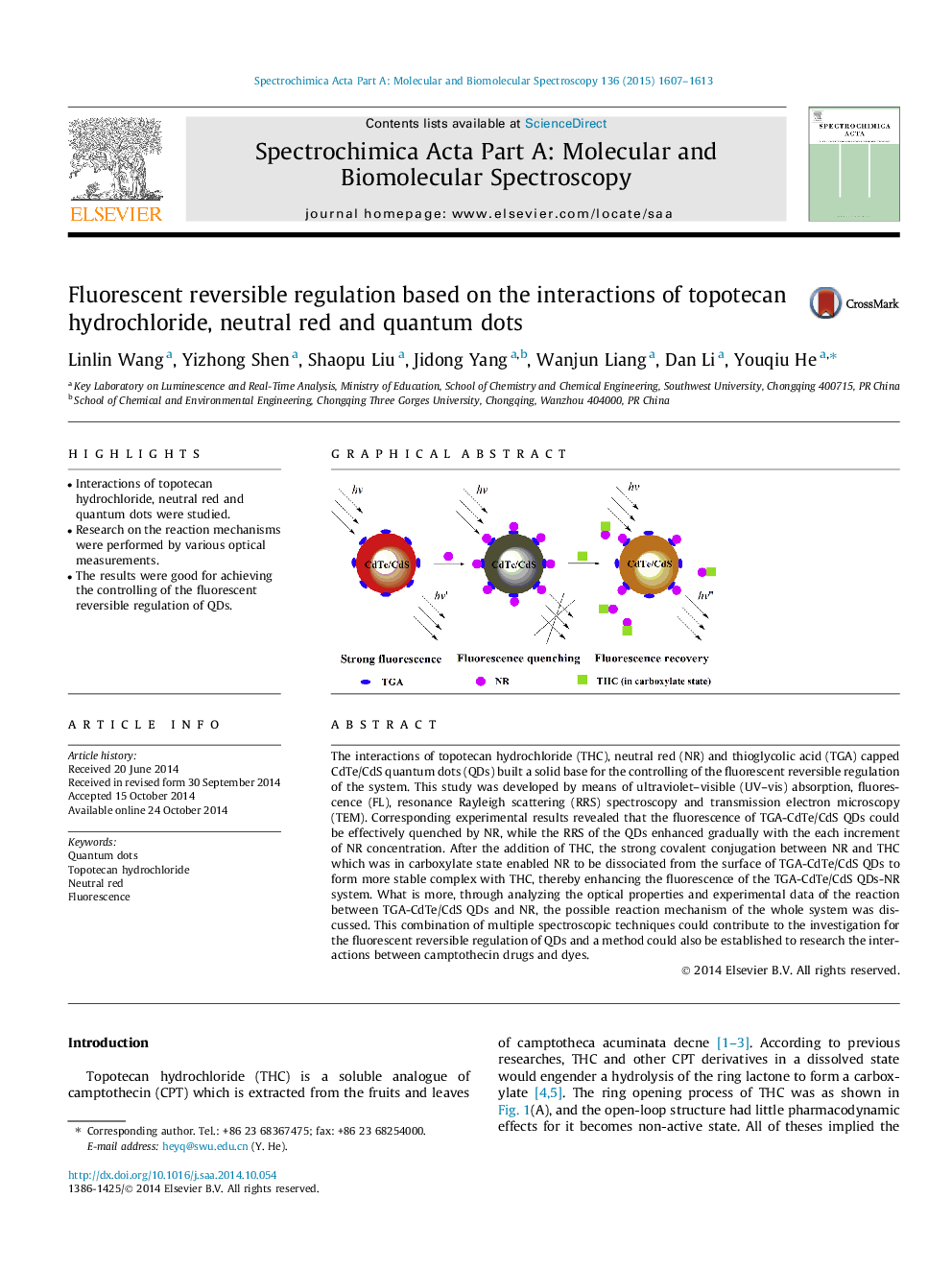| Article ID | Journal | Published Year | Pages | File Type |
|---|---|---|---|---|
| 1232472 | Spectrochimica Acta Part A: Molecular and Biomolecular Spectroscopy | 2015 | 7 Pages |
•Interactions of topotecan hydrochloride, neutral red and quantum dots were studied.•Research on the reaction mechanisms were performed by various optical measurements.•The results were good for achieving the controlling of the fluorescent reversible regulation of QDs.
The interactions of topotecan hydrochloride (THC), neutral red (NR) and thioglycolic acid (TGA) capped CdTe/CdS quantum dots (QDs) built a solid base for the controlling of the fluorescent reversible regulation of the system. This study was developed by means of ultraviolet–visible (UV–vis) absorption, fluorescence (FL), resonance Rayleigh scattering (RRS) spectroscopy and transmission electron microscopy (TEM). Corresponding experimental results revealed that the fluorescence of TGA-CdTe/CdS QDs could be effectively quenched by NR, while the RRS of the QDs enhanced gradually with the each increment of NR concentration. After the addition of THC, the strong covalent conjugation between NR and THC which was in carboxylate state enabled NR to be dissociated from the surface of TGA-CdTe/CdS QDs to form more stable complex with THC, thereby enhancing the fluorescence of the TGA-CdTe/CdS QDs-NR system. What is more, through analyzing the optical properties and experimental data of the reaction between TGA-CdTe/CdS QDs and NR, the possible reaction mechanism of the whole system was discussed. This combination of multiple spectroscopic techniques could contribute to the investigation for the fluorescent reversible regulation of QDs and a method could also be established to research the interactions between camptothecin drugs and dyes.
Graphical abstractFigure optionsDownload full-size imageDownload as PowerPoint slide
